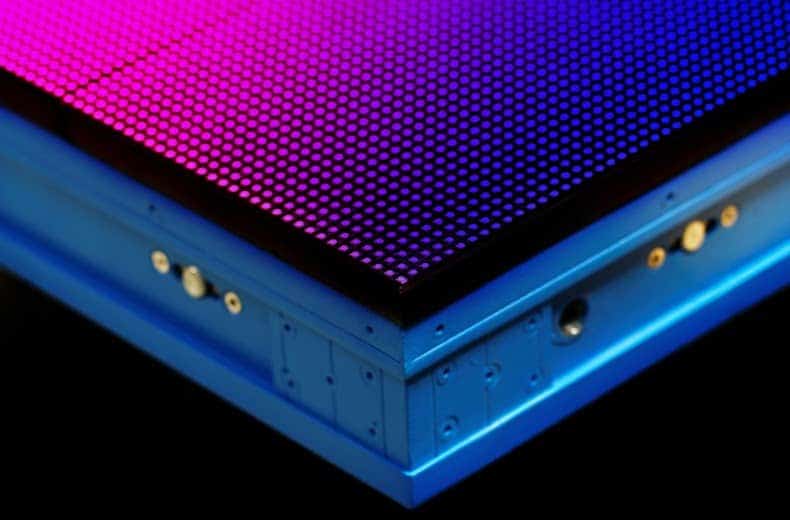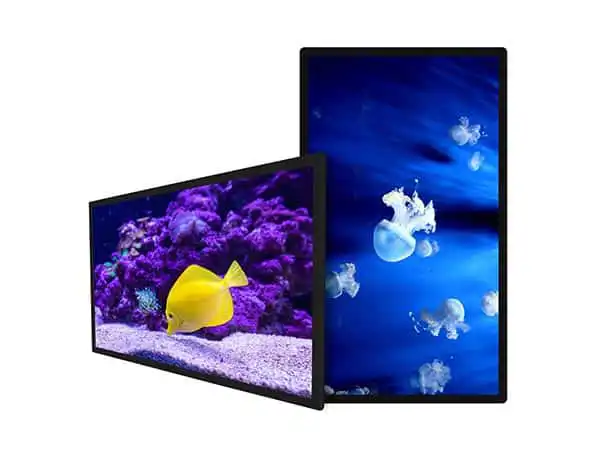LED-vs-LCD? Lately, choosing a TV has become like walking into a candy store. There are so many TV technology options to choose from, and each of them seems just as good.
Then there are the technical terms to deal with, such as LED TV, LCD TV, QLED TV, UHD TV, OLED TV, and more. You might feel like you need to be a tech pro just to watch your favourite TV show in the evening or enjoy a game with your friend.
However, the confusion comes in deciding whether to go for an LED TV or LCD TV screen. The two might seem similar in name, but they are worlds apart.
Many individuals are switching from LCD TVs to LED TVs. The reason for the switch lies in the innumerable benefits LED screens offer.
Here at Dynamo LED, we offer both LED and LCD TVs, and we appreciate the benefits of both TVs. Be sure to check out our buying an LED Display guide for more info.
In this article, we explain the difference between LED and LCD TV technology and which is better.
Looking to buy an LED or OLED TV?
LED vs LCD Technology
The main difference between an LED and LCD monitor comes from the display technology used to create the picture displayed.
First, an important thing to understand is that the LED (Light Emitting Diode) monitor is an improvised version of the LCD (Liquid Crystal Display). This is why all LED monitor is LCD in nature, but not all LCDs are LED monitors.
LCD technology revolutionized monitors by using cold cathode fluorescent lamps for backlighting to create the picture displayed on the screen. A cold cathode fluorescent lamp (CCFL) is a tiny fluorescent bulb. In the context of this article, LCDs refer to this traditional type of CCFL LCD TVs.
LED monitors took the old technology a step further by replacing the fluorescent bulbs with LED backlight technology. And OLED (organic light-emitting diode) technology improves it even further by eliminating the need for backlighting. So with LCD vs LED, LCD is essentially the old technology.
Direct View LED (aka LED Display)
Early LED monitors had the LED lights placed on the edge of the monitor, called LED edge lighting. However, monitors have changed since then.
Now, LED monitors are direct-view LEDs. Direct view LEDs go a step further and replace the entire screen with an array of LEDs.

This turns a single monitor into a modular assortment of countless light-emitting diodes. Additionally, this expands how big the monitor can be without blowing up the cost exponentially.
The quality of direct-view LED screens is measured by pixel pitch. The pixel pitch is the distance between two adjacent LEDs on the display. The smaller the pixel pitch, the better the quality of the image.
Is LED or LCD Better?
To answer the question ‘which is better- LED or LCD TVs?’, we need to evaluate them on various factors that make a display better or worse.
Let us go through these factors one by one and understand which technology wins in each criterion:
Energy Efficient
Since LEDs replace fluorescent bulbs with light-emitting diodes, LED TVs are more energy-efficient than LCDs. A 32-inch LED TV screen consumes 10 watts less power than the same size LCD screen. The difference in power consumption increases as the size of the display increases.
Size
Light-emitting diodes are considerably smaller than fluorescent lamps used in LCD monitors. Fluorescent lamps have a considerable thickness, but the thickness of diodes is next to none. Moreover, countless diodes are assembled in the same plane, so the thickness of the array isn’t increased no matter how many diodes are present.
Therefore, an LED panel is thinner than an LCD panel. On average, an LED screen can be one-third the thickness of an LCD screen of the same size.
Viewing Angle
Edge-lit LEDs have a slight drawback in viewing angle compared to LCDs, because of the position of the light source. However, direct-view LEDs offer a better angle for viewing than LCDs as the light source is evenly spread on the screen.
Response Time
This is the time it takes to shift from one colour to another. Response times are generally measured in milliseconds (ms). The shorter the time to respond, the better the quality of the images produced.
When it comes to LCD vs LED, typically, LED TVs have shorter (better) response times than LCD screens.
Contrast
Since LED displays use full-array LED backlighting rather than one big backlight, LED TVs offer significantly better contrast than LCDs. LCD backlighting technology only shows white and black, but LED backlighting can emit the entire RGB spectrum, thereby providing a deeper RGB contrast.
Which Lasts Longer, LCD or LED?
If you wonder which display will last longer, this debate is also won by LED displays. LED televisions have a longer lifespan of 100,000 hours on average, compared to 50,000 hours provided by LCD televisions.
Is LED or LCD Better for the Eyes?
An LED display provides the option to dim the backlight, along with other eye comfort features. Not only that, it provides a wider viewing angle without harming image quality. Therefore, an LED display is far better for your eyes than an LCD.
Maintenance
In an LED display, a lot of smaller diodes are used and if a diode is damaged, it can be replaced. In an LCD, you will need to replace the entire bulb in case of damage. Therefore, an LED display is easier and cheaper to maintain than an LCD.
Cost
Since LEDs are a better and newer technology, the price of an LED display is higher than an LCD. However, this is only when we are considering the purchase cost.
When you consider factors such as lifespan and maintenance, an LED display turns out to be cheaper than an LCD one in the long run.
Which Has Better Picture Quality – LED or LCD?
The picture quality of an LED display is far better than an LCD. Due to modular light-emitting diodes, an LED screen produces better control over the contrast, rendering a clear picture. Also, LED provides RGB contrast, which can show truer blacks and truer whites.
Not to forget, they provide a shorter response time as well. Both of these factors result in LED displays having a better picture quality compared to LCD displays.
Which is Heavier, LCD or LED?
Since LED displays are considerably thinner than LCDs, they weigh considerably less. On average, an LED screen weighs about half of an LCD screen of the same size.
Summary
3.1 Pros and Cons of LCD
| Pros | Cons |
|
|
3.2 Pros and Cons of LED
| Pros | Cons |
|
|
Why LED is Better Than LCD
As you might have noticed by now, LED wins the battle with LCD without any doubt. This is because LED displays have an advantage in all the factors that matter when considering a purchase, except price.
Even when you consider the price, you will find that while LED technology is costlier, it provides better value for money in the long run. This is because of the longer lifespan and easier maintenance of LED screens.
Therefore, if you are considering buying a display for yourself, you should go for an LED display without second thoughts.
Conclusion
LCD vs LED? The LED is often regarded as a third-generation display. It meets the demands and preferences of the new generation very much.
They are more attractive too. With the increasing shortage of space in new residential complexes, what better solution than an ultra-thin LED display giving a cinematic experience in the comfort of your home.
LED screens are the first choice among the public today, across generations. All are opting to switch to LED from LCD to make their lives more enjoyable and better.
Frequently Asked Questions
Yes, an LED monitor uses considerably less electricity than an LCD monitor. This is because it replaces one big fluorescent bulb with tiny diodes which consume negligible energy.




